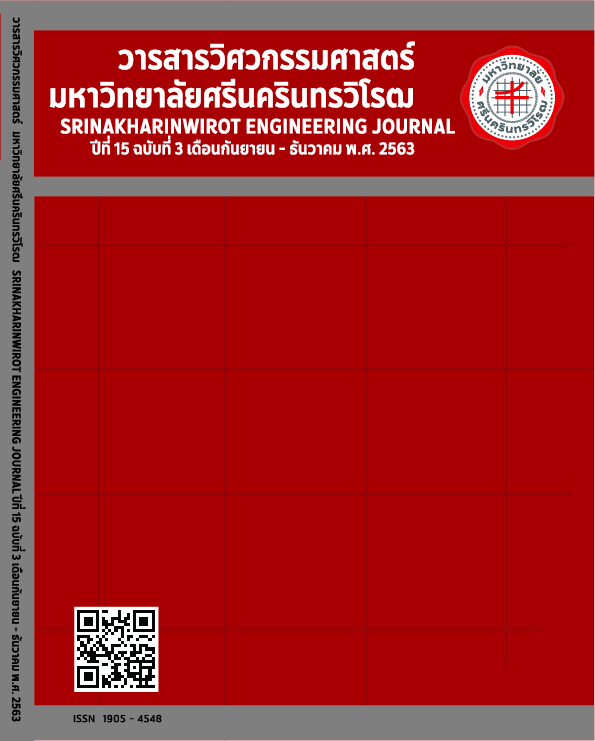Gross Domestic Product and Economic Value of Water Resources of River Basins in Thailand
Main Article Content
Abstract
Water resources are mainly natural resources for the economic development of each country in the world. In recent, the climate change has affected water resources in the productive process of every economic sector. It is imperative to have a consideration for water allocation in economic efficiency. This study aims to calculate the gross domestic product (GDP) and water demand in each sub-district (tambon) and assess the economic value of water (GDP/cu.m.) of 25 basins in Thailand. GDP and water demand were considered from the main economic sectors of Thailand such as agriculture, manufacturing, and service. They were estimated using the available secondary database from government’s agencies. The results showed the GDP of basins, which found that the Chao Phraya River Basin is the maximum GDP, but it consumed only the moderate water. In addition, the economic value of water in the manufacturing sector is the highest values in generating the GDP. This study can recommend the policymakers for the design of economic and environmental policies in driving Thailand’s economy.
Article Details
Copyright belongs to Srinakharinwirot University Engineering Journal
References
The Royal Irrigation Department (RID). (2018, April 11). Evapotranspiration (ET) of crops [Online]. Available: http://water.rid.go.th
Centre for Agricultural Information, “Agricultural of statistics of Thailand 2010,” Ministry of Agriculture and Cooperatives, 2010.
Government Gazette. (2018, May 20). Establishment of the Office National Water Resources, Thailand [Online]. Available: http://www.ratchakitcha.soc.go.th
Office of National Water Resources Committee. (2018, May 20). State of water environmental issues [Online]. Available: http://www.wepadb.net/policies/state/thailand/thailand.html
C. Siripornpipul. (2018, May 20). Technological demand of water resources management in urban development in Thailand [Online]. Available: https://www.asef.org/images/docs/2%20Technological%20Demand%20of%20Water%20Management%20in%20Urban%20Development%20in%20Thailand.pdf
The National Statistics Office (NSO). (2017, January 8). Gross Domestic Product (GDP) in Thailand economy [Online]. Available: http://service.nso.go.th/nso/nsopublish/BaseStat/basestat.html
P. Chuenchum, P. Suttinon, and P. Ruangrassamee, “Input-output analysis of water deficits in nan river basin, Thailand,” in THA 2017 International Conference on Water Management and Climate Change Towards Asia’s Water-Energy-Food Nexus, Bangkok, 2017, pp. 265-271.
The Office of National Economic and Social Development Board. (2017, January 8). The Input-output table of Thailand 2010 [Online]. Available: http://www.nesdb.go.th
N. Chuenchum, Theory of Economics and Analysis. Bangkok: Thammasat University Press, 2005.
S. Koontanakulvong, C. Suksri, T. Kitpaisalsakul, P. Santithamnon, A. Putthividhya, P. Hoisungwan, A.D. Gupta, and S. Nasu, “Effectiveness Aspect of Surface Water Management and Impact on Groundwater,” Chulalongkorn University, Bangkok, Thailand, Final Rep., 2005.
P. Suttinon, S. Nasu, N. Bongochgetsakul. K. Uemoto, and T. Ihara, “Hybrid water input-output model for regional management,” J. SSMS., vol. 9(1), pp. 1-9, Dec. 2013.


